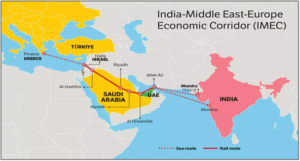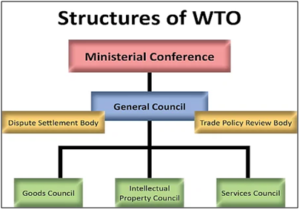- Home
- UPSC Mains
- Daily Free Initiatives
- Courses
- KPSC / KAS
- हिंदी
- Centres
- Contact Us
Category: Science and Technology
Context:
About Green Crackers:

About Petroleum and Explosives Safety Organisation (PESO):
Source:
Category: International Relations
Context:
About India–Middle East–Europe Economic Corridor (IMEC):

Source:
Category: Polity and Governance
Context:
About National Commission for Minorities (NCM):

About Minorities in India:
Source:
Category: Miscellaneous
Context:
About Henley Passport Index:

Source:
Category: International Relations
Context:
About World Trade Organization (WTO):

Source:
(UPSC GS-II — Government policies and interventions for development in various sectors and issues arising out of their design and implementation)
Context (Introduction)
India hosts diverse refugee populations but has no single refugee law. Recent consolidation under the Immigration and Foreigners Act, 2025 streamlines foreigner management, yet status-blind enforcement and religion-linked pathways risk arbitrariness, rights gaps, and security-humanitarian trade-offs.

Main Arguments
Criticisms / Drawbacks
Reforms to Pursue
Conclusion
India’s civilisational ethic and strategic interests converge on one point: clarity. A religion-neutral refugee law, welded to rigorous screening and clear rights-duties, would replace ad-hocism with predictable protection—strengthening security, federal coordination, and India’s credibility as a humane regional leader.
Mains Question
Source: The Hindu
(Relevance: UPSC GS Paper III – Infrastructure: Energy; Effects of Liberalization on the Economy; Growth of Technology and Industrial Development)
Context (Introduction)
India’s path to 500 GW renewable energy by 2030 and net-zero emissions by 2070 hinges on securing critical minerals such as lithium, cobalt, and rare earth elements (REEs) — essential for clean technology, battery storage, and green industrial growth.
Importance of Critical Minerals
Main Arguments
(a) Import Dependence and Global Concentration
(b) Domestic Exploration and Emerging Potential
(c) Institutional and Strategic Efforts
(d) Recycling and Urban Mining
(e) Global Partnerships and Mineral Diplomacy
Key Issues and Challenges
Reforms and Measures Needed
Conclusion
Critical minerals are the new strategic resource frontier. India must transition from being a raw importer to a value-chain participant through robust domestic mining, technology partnerships, and circular-economy innovation. A coherent, fact-driven mineral policy backed by science, sustainability, and diplomacy will transform India into a critical-mineral power and a leader in green growth.
Mains Question:
Source: The Hindu
(Relevance: UPSC GS Paper II – Structure, Organization and Functioning of the Judiciary; Role of Women and Issues Related to Gender Equality)
Context (Introduction)
Despite progress in the lower judiciary, where women constitute nearly 38% of judges, India’s higher judiciary remains male-dominated — with only 3.1% women in the Supreme Court and 14% in High Courts, reflecting deep systemic imbalance.
Main Arguments
Issues and Bottlenecks
Reforms and Policy Measures
Conclusion
Gender equity in the judiciary is not symbolic — it is central to justice, equality, and institutional legitimacy. Reforming judicial appointments through AIJS and transparent Collegium practices can democratize access, enhance trust, and reflect India’s constitutional morality. True equality in courts will mark India’s transition from formal justice to substantive equality under law.
Mains Question:
Source : The Hindu
